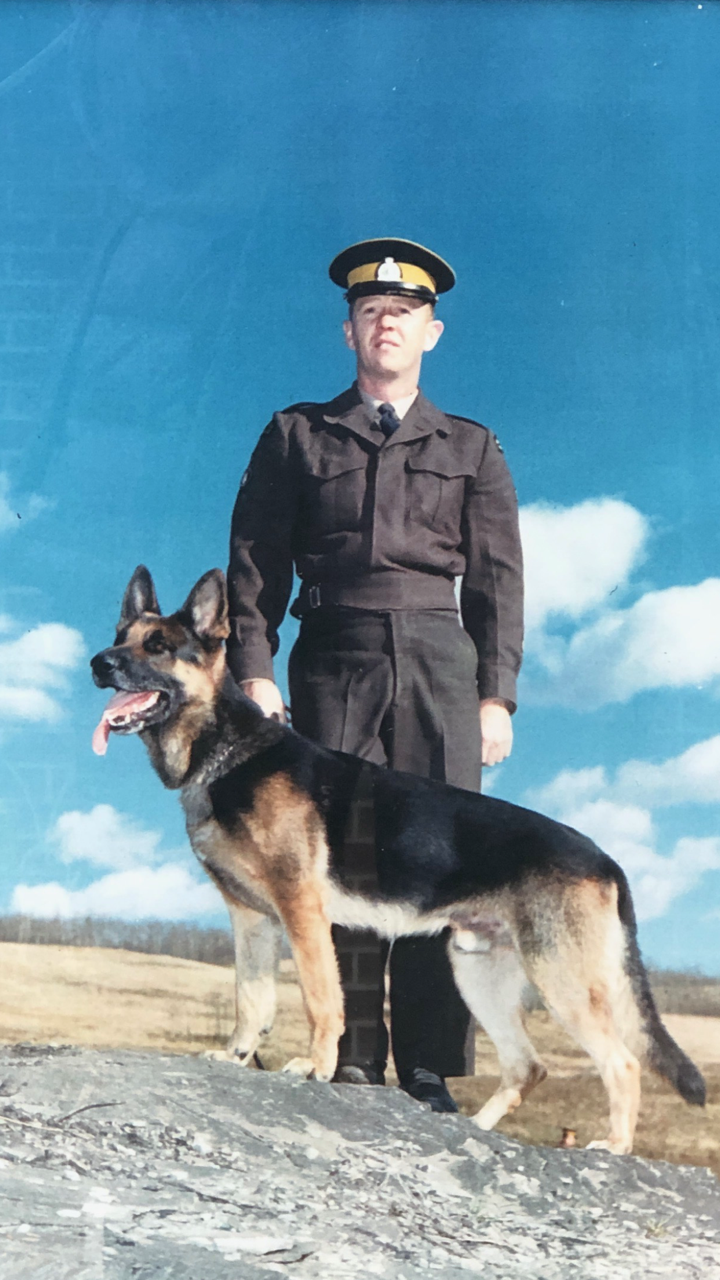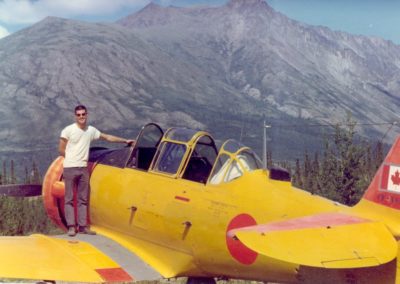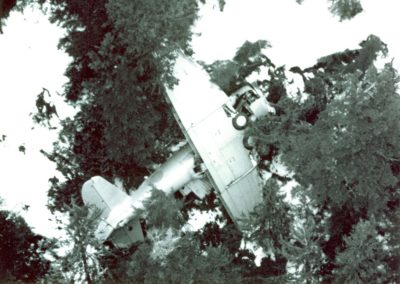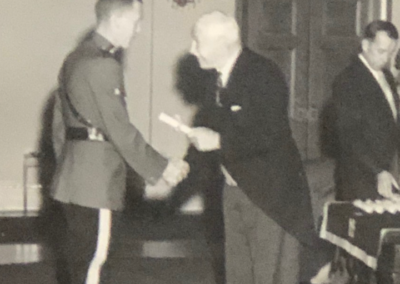Robert Laurence (Laurie) Marshall CM

Home Town: Creston B.C. / Calgary AB
Training Division: “Depot”
Regimental Number: 20836
Divisions Served: “E”
Medals & Honours: Commissioner’s Commendation for Bravery 1961, Commanding Officer’s Commendation 1965, Commanding Officer’s Commendation 1966, Canada Centennial Medal 1967.
Pillar Location: Pillar V, Row 5, Column E
Story:
“When I see Police Service dogs being trained and used in various ways today for searching out drugs, search and rescue and other emergency support, I recognize the small contribution I’ve made to policing in North America”, Robert Laurence Marshall.
Robert Laurence (Laurie) Marshall CM, was born September 22 1938 in the small town of Creston BC. He was raised in Calgary AB where he worked at Royalite Oil prior to joining the RCMP. He graduated Depot in 1959 at 20 years of age and began his career as a 3rd class Constable posted at the Pattullo Bridge B.C.
During his time at his first posting Cst. Marshall received the Commissioner’s Commendation. On the morning of January 13 1961, Cst. Marshall proceeded to climb the superstructure of the Pattullo Bridge in connection with the successful apprehension of a mentally unstable person. He managed to talk this person down from the bridge, successfully saving this individual from harming themselves.
Cst. Marshall’s second posting led him to the New Westminster Sub Division, Cloverdale detachment. At that time, he met Cpl. Wally Regitnig, who became a long-time friend that enlightened Laurie to the dog master section of the RCMP. Keen to join and learn about this discipline, Cst. Marshall commenced pursuing this area. Prior to leaving for Ottawa and dog master training, Laurie married in June 1962 to Bonnie Marie Wing.
After completing Dog master training in Ottawa in the fall of 1963, Cst. Marshall was then posted to Victoria Sub Division, Nanaimo BC detachment in 1964. He worked as a dog master for the entire Vancouver Island and West Coast of BC. At that time there were few dog masters, 5 total in British Columbia, so they covered vast geographic areas. His first P.S.D was “Brandy”. It was on May 20 1965 that he received the Commanding Officer “E” Division Commendation from the Lieutenant-Governor of British Columbia. Cst. Marshall was commended for his “presence of mind and calm deliberate action when confronted with an armed criminal near the Port Alberni B.C. This conduct was no doubt the prime factor in preventing serious injury or death to himself or P.S.D. “Brandy” and resulted in the successful apprehension of this criminal”.
In 1965 Cst. Marshall was then transferred to New Westminster Sub Division, Mallairdville detachment where he continued his work as a dog master. At this division he received his third Commanding Officers Commendation. On October 11 1966, Cst. Marshall, dog master, was commended for his “presence of mind when confronted with an armed criminal near Agassiz, B.C. Cst. Marshall’s courageous conduct resulted in the criminal being apprehended immediately and no doubt prevented a more serious situation from developing. He was assisted by P.S.D. “Dirk”.
During this time at the New Westminster Sub Division, Montreal airport and Vancouver drug squad, Cst. Marshall continued his training with P.S.D. “Dirk”, specifically training him to smell out soft and hard drugs. This had never been successfully done in North America. P.S.D. “Dirk” was the first to ever implement searches for drugs. Once successful in his training, “Dirk” became the example for the rest of North America in training dogs for smelling out specific drugs. They were flooded with calls to find out how it had been done.
Following this success, On July 1 1967, on the occasion of the 100th anniversary of the Confederation of Canada, Cst. Marshall, received the Centennial Medal in recognition of his valuable service to the nation. Cst. Marshall rose the ranks to Corporal and then Sergeant, His work was further noted, upon which he was bestowed recognition; On the occasion of the 25th anniversary of her majesty the Queen on the Throne, the accompanied medal was presented to Sgt. Robert L. Marshall.
In addition, in 1973, Laurie Marshall with Donald Cunnings (director of parks and recreation Coquitlam) created and headed the coquitlam/port coquitlam chapter for search and rescue . Laurie continued his work with search and rescue along with his regular duties as a member till he retired policing.
In 1977, Sergeant Marshall, left the dog section to resume General Duty Policing as a Watch Commander in Port Coquitlam B.C. He continued his service there until 1980 at which time he left the force to pursue a career as a self- employed contractor with heavy equipment. Working mainly for the railroads until he retired.
Laurie Marshall reminisces that his fondest memories were working with his 3 dogs, Brandy, Dirk and Ra. He had the amazing opportunity to train and work with these dogs, travel to far reaching geographical areas of B.C. and parts of Canada, meet amazing, memorable people, some of which became lifelong friends.
Laurie Marshall wanted to include one memorable call he attended to give some insight into the era of policing in British Columbia and the terrain, weather and isolated geography. Cpl. Marshall attended many calls similar to this one. A book has been written by an author and close friend to one of the victims in this instance, “The Harvard: Rock of Eternity by Jane Gaffin. Jane Gaffin interviewed Laurie Marshall for details in the book.
It was November 1969 and Air Sea Rescue had received a homing device in need of assistance, a downed plane atop Roderick Island off the West Coast of British Columbia. Ed Hadgkiss had been flying his Harvard XEN from the Whitehorse airport to Pitt Meadows using the shorter coastal route that day, which in fall/winter was more treacherous due to the rapidly changing weather. He was accompanied by Kathy Rheaume on their first holiday.
Upon departing Whitehorse, the weather at the North Vancouver Island was open with 10 miles of visibility. Unfortunately, at Five O’clock the visibility had changed and Ed Hadgkiss was an hour off his flight schedule. At that time there was no way of knowing of a weather change. Fog had moved in making visibility impossible. He had to adjust his flight plan several times on route which caused the predicament of running out of fuel and being forced to land. Ed took the plane down atop a ridge line on Roderick Island, where the terrain was rocky, full of crevices and trees. The plane scraped along the rough icy terrain, flipping it over leaving it upside down next to a cliff edge.
Cpl. Marshall, accompanied by PSD “Dirk”, and two other dog masters with five Air Sea Rescue persons were brought in to an abandoned fishing cannery. They used the abandoned building as a base camp where they slept on wooden floors and had supplies brought to. Each morning they were flown via helicopter to the top of Roderick Island to begin their search, it was the only place they could land. It was winter conditions with 20 feet of snow in some areas, dense brush and trees lined the entire island right to the water’s edge. There were no beaches, just rock, ice, snow, dense brush and trees. The conditions were treacherous and difficult for searching. It would take 7 hours to hike one mile.
On the first day of their search as they approached the island they saw a pack of wolves scrambling their way up to the plane. The plane lay amongst some trees upside down surrounded by cliffs dropping 200 feet. To look at the view from the plane it would appear the water was close due to the steepness of the geography, but in fact it was 5 miles straight down. Upon searching the plane, they found a note which indicated they had set up camp for a while but decided to head down to the water’s edge to build a fire near a shipping lane in the hopes a boat would rescue them. Ed wrote, that if someone finds this wreckage they were welcome to salvage what they could from it. There were several polaroids scattering the ground showing their camp.
In order to get down to the water from where the plane was perched would require equipment and skills due to the treacherous terrain and steepness of cliffs. They began their search close to the plane as they predicted they may have fallen in trying to do so. The team continued their search in this tough and unforgiving island environment for a week. They would have to climb down and go back up to the top of the island each day as it was the only spot they could meet the helicopter. Arriving at dawn and leaving at dusk, to return to the cannery where one member of the Air Sea rescue took on cooking. Through sheer exhaustion they would sleep shortly after.
Ed Hadgkiss and Kathy Rheaume were never found. There was no further evidence of their existence on the island except that which was found at the plane. Cpl. Marshall and PSD “Dirk” returned in the Spring after the snow melt to spend a day searching. Again, no signs of the missing couple. The plane was removed from the island. This was done so people did not mistake it for a recently crashed plane and report it.
Robert Laurence Marshall is father to his three children, Dana, Darren and Jodie and 6 grandchildren, and currently lives in Chilliwack B.C. with his wife of 57 years.
Written by Jodie Marshall



